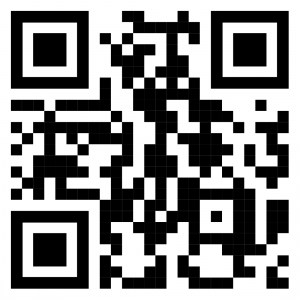The idea of activating Samoa (5W) and Vanuatu (YJ) occurred to me immediately after the end of the H40GC DXpedition 2017. I had other plans, but in February, 2018, I decided to activate these two destinations. At that time, Samoa (5W) was 127th in the CLUBLOG ranking as the most wanted country among the amateur community and Vanuatu (YJ) was number 75 in the same ranking.
Below is some brief information from Wikipedia about Samoa and Vanuatu.
5W – Samoa
Samoa, know as Western Samoa consists two main islands Savai’i and Upolu, account for 99% of the total land area, and eight small islets. Samoa has total area 2842 square km. Samoa located south of the equator, about halfway between Hawaii and New Zealand in the Polenesian region of the Pacific Ocean. The capital city of Samoa is Apia, located on the main island of Upolu.Samoa has a population around 194,000. About three – quarters of population live on the main island of Upolu. 92% of the population are Samoans, 7% Euronesians – people of mixed European and Polynesian ancestry and 0.4% are Europeans.
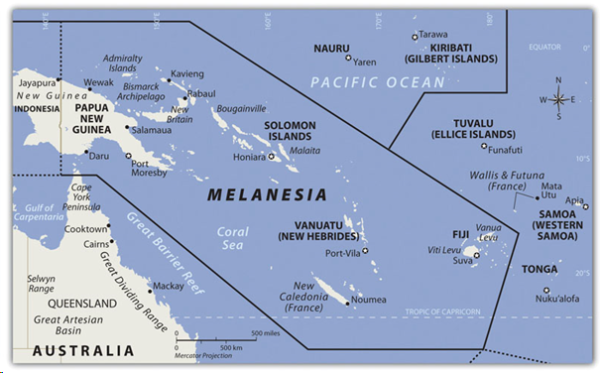
YJ – Republic of Vanuatu
Officially, the Republic of Vanuatu is a Pacific nation island located in South Pacific Ocean. The archipelago, which is of volcano origin is 1750 km east from Australia (VK), 540 km northeast of New Caledonia (FK), east of New Guinea (P29), southeast of Solomon Islands (H44) and west of Fiji Republic (3D2). The fourteen Vanuatu islands that have surface areas of more than 100 square km are, from largest to smallest: Espiritu Santo, Malakula, Efate, Erromango, Ambrym, Tanna, Penfecost, Epi, Ambae (Aoba), Gaua, Vanua Lava, Maewo, Malo and Aneityum (Anatom).
The nation’s largest towns are the capital, Port Vila, on Efate Island and Luganville on Espiritu Santo Island. Vanuatu has a population about 243,000. The inhabitants of Vanuatu are called Ni-Vanuatu. The Ni-Vanuatu are 98,5 % of Melanesian descent with the remainder made up of a mix of Europeans, Asians and other Pacific islanders.
The organization and preparation for the 5W0GC & YJ0GC DXpedition 2018 took 7 months – a time of hard work involving almost of all my spare time. After a successful initial research on these two destinations regarding travel, visas and accommodation, I decided to carry out:
5W0GC activity from September 28, 2018 to October 14, 2018, and YJ0GC activity from October 15 to November 4, 2018.
In March 2018 after contacts with the government officials responsible for radio licenses at the Telecoms of Samoa and Vanuatu, I was able to get the necessary licenses quickly. I received permission to use the call sign 5W0GC from Samoa and YJ0GC from Vanuatu.
The next step in the preparing for this DXpedition was to buy the necessary airline tickets and make reservations for Samoa and Vanuatu accommodations. During this time I received a nice invitation from Atsu, 5W1SA to visit him and activate 5W0GC from his home. His hospitality was most gracious and made it easier for me to optimize my station setup and location. I am grateful to Atsu for the invitation, hospitality and help which he provided me during my stay in Apia, Samoa. Thanks, Atsu!
For choosing a place to stay at Port Vila, Vanuatu, I received assistance from Chungki, VA7YM (YJ0YM). The proposed location was the Blue Pango Motel in Port Vila. I had another backup motel option, but it did not have to be used as the Blue Pango Motel turned out to be a very good place for YJ0GC activity.
In May 2018 I had a conversation with Lubo, OM5ZW, a good friend from our T2GC DXpedition in 2015. He expressed a desire to participate as an operator at YJ0GC. He further recommended Karel, OK2WM to join our team. Now, the composition of the upcoming DXpedition to Vanuatu grew to 3 operators.
The months from May to September 2018 passed with preparing and testing the radios and antennas to be used on the DXpedition. During these months I also sought sponsors for the upcoming 5W0GC (Samoa) and YJ0GC (Vanuatu) activities. To all the radio amateur Associations, Foundations, Club and Individual Sponsors who responded to my requests for support to this DXpedition, I give my wholehearted “Thank You”.
The day is 26 September 2018.
Again, I am on my way to the Pacific Ocean! Far from the Motherland. This time my goal is Samoa (5W) and Vanuatu (YJ) – two island countries located thousands of kilometers from Bulgaria.
After three flights, two of which were about 11 hours (each one!), I arrived in Nadi, Fiji, in the early morn of September 28. The same day at 13:40 local time followed another flight to Apia, Samoa.
According to plan, at about 5 PM local time, I was in the passenger arrival area of Faleolo International Airport (Apia), where Atsu, 5W1SA, was expected to meet me.
I was quickly recognized by Atsu, 5W1SA. With so much luggage and with an ACOM sign on one of my boxes it was impossible not to recognize me from the other arriving passengers. We met for the first time! After a short conversation we boarded his Jeep and headed to his house, located near the highest point of a mountainous area and about 700 meters above sea level.
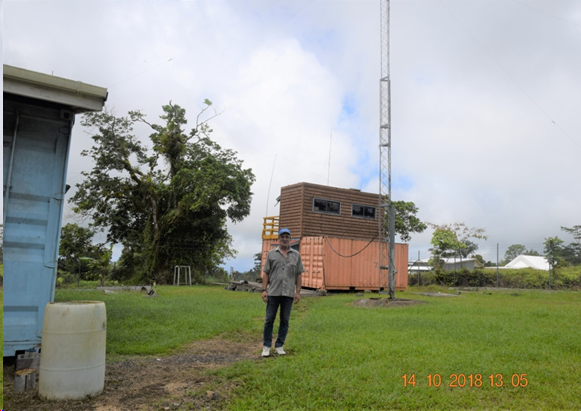
Arriving at Atsu’s home, I immediately installed my radio equipment. It was dark outside when I began to work on the air with Atsu’s dipole antennas at 40 and 80 meters.
During the first night I worked cw on both the 40 and 80 meter bands. The tempo was good, and I stayed committed to the big pile up. I was so energized I operated throughout the night. At dawn, I shut down the station and began to prepare for the raising the vertical antenna for the 160/80/40m bands. This is the same antenna I had successfully used on my prior Dxpeditions.
Next to Atsu’s property, the 5W1SA QTH had plenty of empty space, and though overgrown with grass and other vegetation, it was possible to install numerous antennas without any problems.
About 11 АМ local time on September 29th, Atsu and I prepared and raised the 160m/80m vertical. That same day I began making 160m cw qsos. During my time as 5W0GC, I tried to make the most of the windows of good propagation for the different continents. Despite the poor propagation, the rate of the contacts was good.
Samoa is known for its daily rains in October. Indeed, during my entire stay in Samoa, there was rain every day, often accompanied by a strong wind. This interfered with the installation of my second antenna – a multi-band GP, designed to work 10-40m. It was on the 3rd day of my arrival on Samoa that I successfully erected this antenna.
Although the focus of this Dxpedition was on the low bands, I was very active on the other bands also, often including CW, SSB and RTTY.
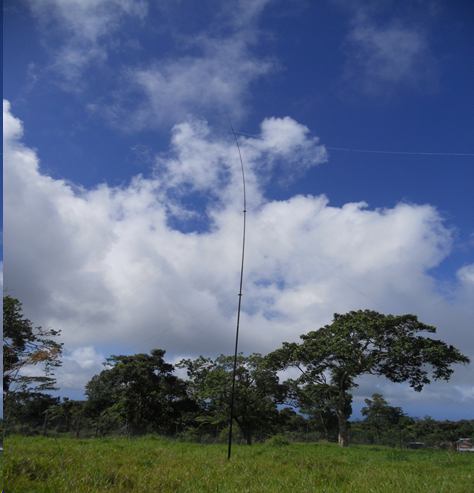
5W0GC activity occurred from late afternoon on September 28 to early morning on October 14. During the night I was active at on 160/80/40m, and during the day on 30 to 10m. Daily pauses were no more than 3 to 4 hours for sleeping and antenna repair. After two weeks, 14,094 QSOs were logged on all radio bands using CW, SSB and RTTY. I am delighted that from Samoa (5W) I gave a new one to many radio amateurs, not only on the low bands but also the high bands.
Here are the statistics from CLUB LOG for 5W0GC activity:
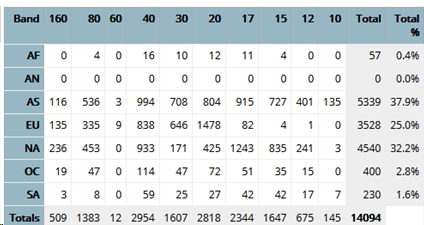
The 5W0GC operation by Stan, LZ1GC ended at 02:00 AM local time on October 14. After I went QRT, I disassembled and packed the technical equipment and prepared for a late afternoon departure. At dawn, I began dismantling and packing the antennas.
The flight to Nadi, Fiji was at 17:40 local time. However, on arriving at Apia’s Faleolo Airport with Atsu, 5W1SA, we found that the flight would have a delay of 2 hours. Due to the announced delay of my flight to Fiji, Atsu returned to his home, and I stayed at Faleolo Airport waiting for my upcoming flight.
Time was passing, and I was already thinking about the upcoming activity at Vanuatu. Then, just when I was expecting information on the flight departure to the intermediate stop in Fiji, I heard the announcement that flight FJ 254 from Apia, Samoa to Nadi, Fiji was canceled. This was very unpleasant news to say the least!
During the preparation of my DXpeditions, I always prepare for any problems. I usually have solutions for them, but in this case I was unpleasantly surprised and could do nothing. I had previously arranged with Lubo (OM5ZW) and Karel (OK2WM) to meet on October 15 at Nadi Airport, Fiji. They were to arrive at Nadi Airport at 08:35 local time on October 15. I would await for them in the passenger arrival area, and then we would travel together in the early afternoon to Port Vila, Vanuatu.
Now, everything was messed up … the meeting as planned was not possible! After an initial confusion among the passengers of the canceled flight, things started to work out – some of the passengers sought to rebook new round-trip flights. Others like me were informed that the next flight to Nadi, Fiji would depart the next day at 17:00 local time. So, that evening (on the 14th) I stayed at the Sheraton Hotel in Apia.
The first thing I did from the hotel was email Lubo (OM5ZW) and Karel (OK2WM) about my canceled fligh, and that our meeting would have to be rescheduled. Fortunately, they were traveling with their own equipment they could use to get on the air quickly – Two transceivers: a Yaesu FT 991 and an Elecraft K3 and two amplifiers: an ACOM 700S and a SPE Expert 1.5. They traveled with extra luggage, which included two vertical antennas from 10-40m and a low frequency receiving antenna donated by Array Solutions. I asked them to activate the bands immediately on their arrival at the motel in Vanuatu. I told them that I would join them as soon as possible once I confirmed the flight from Fiji to Vanuatu. The masts and antenna equipment for the 160 and 80 meter bands were part of my extra baggage. Those bands would be activated later.
On October 15 after the flight from Apia, Samoa I arrived at Nadi, Fiji airport at 18:30 local time. After passing through Fiji customs, I checked for the first flight to Port Vila, Vanuatu. It turned out that the flight will be at 09:00 on October 17, the day after tomorrow
.
As compensation for the missed flight to Vanuatu I got a courtesy stay at Nadi’s Flamingo Hotel thanks to Fiji Airways. From the hotel, I e-mailed Lubo (OM5ZW) and Karel (OK2WM ) that I would join them soon after my arrival time of 11:30 AM on October 17 at Port Vila, Vanuatu. Opening the Dxsummit website, I was happy to see YJ0GC was already on the air. Kudos to Lubo and Karel on their success! That really settled my nerves. YJ0GC was making qso’s on 20 and 40m!
The next day, October 16, I tried to rest after the exhausting 5W0GC activity and the psychological stress caused by the canceled flight. The time had passed slowly over the two day delay, knowing all the while that I needed to be in Vanuatu.
Finally, on October 17 and after a 2-hour flight I was in Port Vila, Vanuatu. After the usual customs check at Port Vila Airport, I took a taxi to the Blue Pango Motel where Lubo (OM5ZW) and Karel (OK2WM) were waiting for me. When I arrived at the motel, we immediately began preparing for the raising the two vertical antennas for 160m and 80m. It took three hours to get both antennas in place. That evening YJ0GC was on both 80 and 160 meters simultaneously with two transmitters.
The next day we also installed a multiband ground plane antenna to operate from 10 to 40 meters.
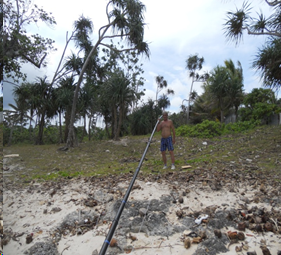
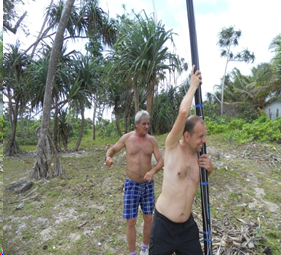
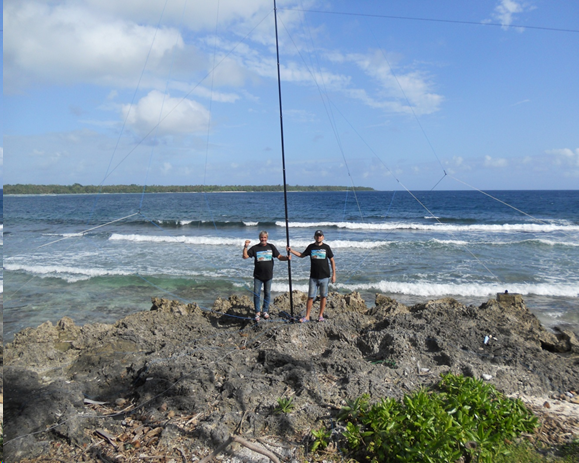
For the majority of the YJ0GC activity our team had 5 TX antennas and one RX antenna array, namely separate vertical antennas for 160 and 80 meters, 1 StepIR vertical antenna, 1 multiband GP antenna, and 1 vertical antenna for 10-40m for transmit and a AS-SAL-30-MK2-DX receiving antenna, kindly donated by Array Solutions. We used the receiving antenna on 160 meters.
We also had 3 operator positions, each one complete with a separate linear amplifier. Unfortunately, we could not use these resources to full potential due to the proximity of the antennas to each other. However, we did manage to work with two radios simultaneously during all of the activity. The third operating position was not used efficiently! In addition, to work efficiently on 160m we had to halt the other stations because of interference.
However, I think that YJ0GC activity was good despite these operational issues! Many contacts were made on the low bands – 160, 80 and 40 meters, so that the mission of the DXpedition with a focus on low bands was fulfilled. At the same time many contacts were also made on high bands to hopefully satisfy many with ATNO’s.
Between October 15 and November 4, 2018, we made 23,448 QSOs with 129 different countries on CW, SSB, RTTY and FT8. The YJ0GC statistics from Club Log are shown in the following two tables.
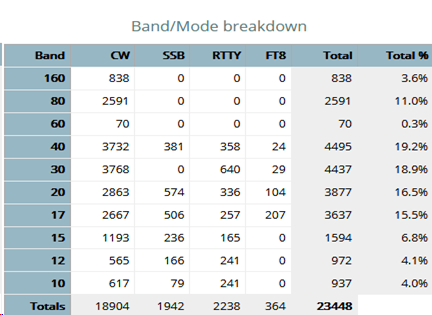
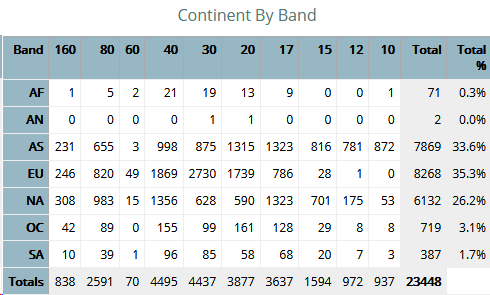
Do not think that during the YJ0GC DXpedition we went without problems. Because our vertical antennas for 160m and 80m were just outside of the motel, there were attacks on them! Several times we detected some of the radials and parts of the guy ropes for the verticals went missing. Apparently, some of the local residents caused us problems. Fortunately, I had packed spare radials and ropes, so these attacks did not significantly affect the YJ0GC activity.
An unexpected experience during the YJ0GC DXpedition was experiencing an earthquake with a magnitude 4.8 on the Richter scale. This was easily felt in Port Vila, Vanuatu at 20:33 local time on October 20. It was a strong horizontal quake lasting about 5 to 6 seconds. I had the feeling that the table on which the equipment was installed was moving. Despite the quake we continued our activity on the air non-stop!
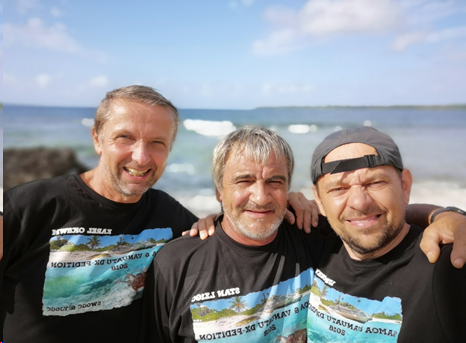
From October 16 to October 27, 2018, YJ0GC activity was performed by 3 operators: Stan, LZ1GC), Lubo, OM5ZW and Karel, OK2WM. On October 28, it was time for Lubo, OM5ZW to return to Slovakia. His work assignment did not allow him to stay until the end of the DXpedition. With Lubo’s departure the YJ0GC DXpedition continued to operate with two operators operating at full throttle.
At dawn on November 4, 2018, YJ0GC made its last QSO and went QRT.
After nearly 5 hours of dismantling the antennas and packing up, Karel, OK2WM and I headed for the Port Vila airport to begin our long journey back to Europe. On our way back to Vienna we would travel through Nadi, Fiji and Seoul, South Korea. Our journey back to Europe went as planned without cancellation of any flights nor problems with customs.
For Karel and I an unforgettable experience was our pre-arranged meeting with Antoine, 3D2AG at the airport in Nadi, Fiji.
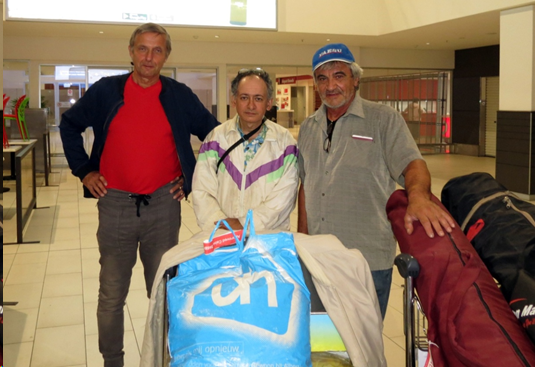
We gave as a gift to Antoine, 3D2AG part of the antenna equipment we used during our YJ0GC activity. We stayed at a local hotel, chatting away the night with Antoine, 3D2AG as we talked about all things amateur radio.
The next day, November 5, after an 11-hour flight on Korean Airlines, we stopped in Seoul, South Korea. There, awaiting our arrival was Aves Kang, DS2AGH – a good friend of mine for many years, who as usual, entertained us during our short stay in Korea! I thank Aves Kang for his help and, of course, his hospitality.
On November 6, after another 11 hour flight on a Korean Airlines Boeing 777, we arrived at the international airport in Vienna, Austria where we were expecting Wolfgang, OE1WEU and Lubo, OM5ZW. Finally, my 43 day trip to the Pacific Ocean in 2018 ended successfully on November 7 after an hour’s flight from Vienna to Sofia, Bulgaria. So completed the 5W0GC & YJ0GC DXpedition 2018.
At the end of this article, I want to express my gratitude for the support we have received from many radio amateur foundations, associations and clubs:
GDXF, SDXF, EUDXF, LA DX GROUP, CDXC ( U.K. ), Mediterraneo DX Club, Clipperton DX Club, KC5WXA – Jake McClain Driver Memorial A.R.C., GM DX GROUP, SWODXA, WVDXA, GSDXA, Mile-HI DX Association, Willamette Valley DX Club, Thracian Rose Club and LYNX DX GROUP.
I also want thank our corporate sponsors who supported this expedition:
ACOM Ltd Bulgaria, SILPA Ltd Bulgaria, microHam, ARRAY SOLUTIONS, Spiderbeam Ltd and GES ELECTRONICS.
Thanks also to CLUB LOG, DXNEWS and all individual sponsors, before and after this expedition!
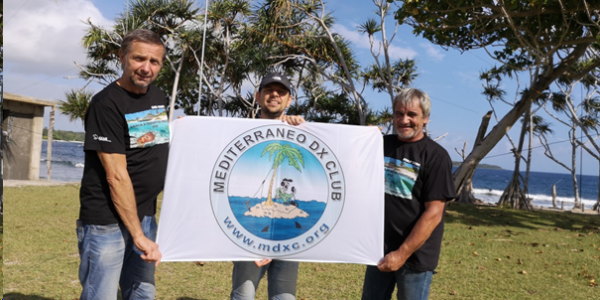
With respect and 73!
Stan, LZ1GC
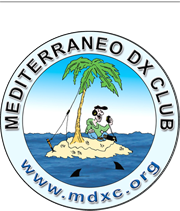

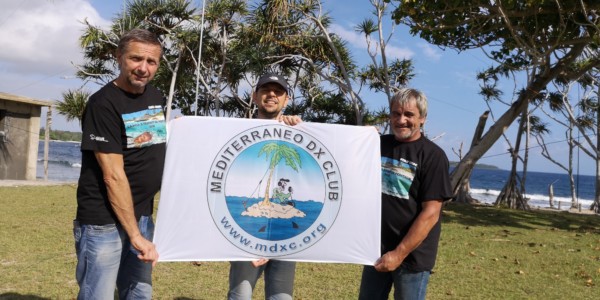
 3B9DJ Rodrigues
3B9DJ Rodrigues  VU4AX Andaman
VU4AX Andaman

